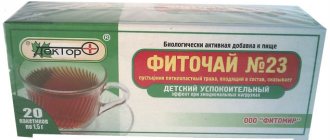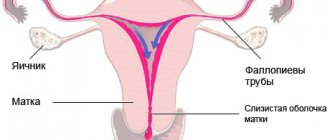Source of pulmonary embolism and risk factors
The most common cause of pulmonary embolism is thrombosis of the main veins of the lower extremities and pelvis.
PE is a common complication in patients who have undergone surgery and other invasive procedures. Venous thrombosis occurs due to blood stasis in the veins of the legs, increased ability of the blood to thrombophilia (or blood clots), and also due to inhibition of fibrinolytic activity of the blood. Acute venous thrombosis develops in 30% of general surgical patients, in 70-80% after traumatological and orthopedic interventions, and in more than 50% of patients with visceral forms of cancer (Trousseau syndrome). With the help of adequate preventive measures, the incidence of postoperative thrombotic complications can be reduced by 3-4 times. Because of this, mortality is reduced by 8 times after surgery, the cause of which is pulmonary embolism.
Order 233 establishes the following gradation of risk factors for thromboembolism in inpatients (if there is more than one risk factor, the overall risk increases).
Low risk group for pulmonary embolism
Risk factors predetermined by the operation: uncomplicated interventions lasting up to 45 minutes (hernia repair, appendectomy, abortion, transurethral adenomectomy, childbirth).
High risk group for pulmonary embolism
(presence of one of the following signs or any combination thereof).
Risk factors associated with the operation:
- orthopedic and traumatological operations on large joints and bones, hip amputation;
- extended operations on the organs of the thoracic, abdominal and retroperitoneal spaces (gastrectomy, pancreatectomy, extirpation of the esophagus, colectomy, etc.);
- the planned duration of the operation is more than 2 hours;
- endovascular interventions (implantation of stents into vessels, balloon dilatation of arteries, endovascular thrombectomy, etc.).
Risk factors due to the patient's condition:
- history of deep vein thrombosis or thromboembolism, varicose veins;
- visceral malignancies, chemotherapy;
- purulent infection;
- paralysis of the lower extremities, prolonged immobilization of the patient;
- age over 45 years;
- diabetes;
- thrombophilia;
- taking estrogen;
- obesity;
- immobilization of the patient for more than 4 days before surgery;
- postpartum period less than 6 weeks;
- heart or pulmonary failure of the second and higher stages.
Prescription of medications, indications and contraindications
Medicines are manufactured in tablets, injection solutions, ointments, and gels. Anticoagulants are intended to treat and prevent the formation of blood clots. Active components affect the production of elements of the coagulation system, reduce the rate of formation of blood clots settling on the inner surface of blood vessels.
Anticoagulant medications are prescribed:
- for acute venous thrombosis;
- preventing the occurrence of thromboembolism - when replacing heart valves, supraventricular tachyarrhythmia;
- heart attacks, blockages of arterial vessels in the lungs;
- ischemic strokes;
- atherosclerotic vascular damage;
- injuries, shock, septic lesions;
- varicose veins;
- hemorrhoids with blood clots;
- formation of blood clots in the IVC.
Medications are not used:
- with lactose deficiency, impaired absorption of galactose, glucose;
- gastrointestinal ulcers, aneurysms;
- renal, liver pathologies;
- bleeding, thrombocytopenia.
The simultaneous use of anticoagulants with Aspirin, Penicillin, Dipyridamole, Cimetidine and other representatives of the NSAID group is prohibited.
During therapeutic procedures, adverse reactions may occur, which occur due to incorrectly selected doses of drugs or violation of the treatment regimen. General symptoms include attacks of nausea with vomiting, diarrhea, pain in the abdomen, allergies with nettle fever. Sometimes massive hair loss and necrosis begin.
Prevention of pulmonary embolism
Prevention of thromboembolism in patients of both (NB!) risk groups includes the following measures:
- physicians must ensure the maximum possible activity of the muscles of the lower extremities (legs) of patients who have been in bed for a long time;
- maximum and possibly earlier activation of patients who have undergone surgical interventions;
- local procedures that increase the volumetric blood flow through the deep veins of the lower extremities (elastic compression of the lower extremities, intermittent pneumocompression).
Prevention of pulmonary embolism in high-risk groups
In high-risk patients, the administration of drugs that reduce the risk of thrombotic complications is additionally used to prevent thromboembolism.
Prevention algorithm with direct anticoagulants
The platelet level is examined before the start of heparin prophylaxis, by the end of the first week, and 10 days after its start. If initial thrombocytopenia is below 50×109/l, heparin preparations are not prescribed. If the initially normal platelet level decreases to less than 100×109/L, heparin preparations are immediately discontinued.
Rules for administering heparins (including low molecular weight ones):
- The drug cannot be administered intramuscularly;
- It is advisable to carry out injections with the patient lying down;
- Injections should be made into the paraumbilical area. The needle is inserted vertically over its entire length, holding the fold of skin between the thumb and forefinger. The fold is released only after the injection is completed and the needle is removed. Do not massage the injection site after administering the drug;
- Do not mix with other medications.
Initiation and duration of heparin prophylaxis
The first injection is performed 2 or 12 hours before surgery (the latter regimen is preferable if regional anesthesia is planned).
The duration of prophylactic heparinization is at least 10 days. If risk factors remain:
- immobilization;
- purulent infection;
- long-term catheterization of central vessels;
- chemotherapy;
- diabetes;
- not removed malignant tumor;
- thrombophilia, excluding antithrombin III deficiency;
- orthopedic interventions.
When is it appropriate to extend anticoagulant prophylaxis:
In this case, an additional argument may be the persistence of thrombinemia (high level of soluble fibrin monomer complexes, etc.). Completion of the preventive course is carried out individually, taking into account the dynamics of risk factors and thrombinemia. Prolongation is carried out with low molecular weight heparins in the doses indicated above, or with other anticoagulants (for example, warfarin under the control of INR - international normative ratio ranging from 2.0 to 3.0, in persons over 65 years of age from 1.5 to 1.8).
Such prevention is considered effective if there are no symptoms of the appearance and development of deep vein thrombosis and pulmonary embolism. Among the absolute contraindications for patients taking anticoagulants are, first of all, ongoing bleeding. Contraindications also include hypersensitivity to the drug and other heparins, severe liver dysfunction, thrombocytopenia less than 100×109/l.
Principles of antithrombotic therapy in children
According to the literature, thrombosis of vessels of various locations has been diagnosed in children more and more often in recent years, while thrombotic and thromboembolic complications are increasingly among the causes of disability and mortality in patients. Thus, the prevalence of venous thrombosis in children in Denmark and the Netherlands is 1.4 cases [33], in Canada and Hong Kong - 0.70–0.74 cases per 100,000 children per year, respectively [15, 19]. The incidence of strokes in children aged 1 to 18 years ranges from 1.29–13.0 per 100,000 children per year, and in newborns reaches 25.0 per 100,000 per year, while in half of the cases the stroke is ischemic nature [34]. Clinically manifest signs of various thrombotic complications are observed in 5.3 patients per 10,000 children hospitalized during the year [21].
Certain types of thrombosis are observed in children of different ages, but, summing up the data from a number of publications, we can conclude that the highest risk of their development is observed in children of the first year of life and in adolescents, especially girls. In most children, thrombotic events occur against the background of various diseases - congenital heart defects, rheumatic, infectious and oncological pathologies, after surgical interventions, trauma, etc. [22, 26].
Thrombophilia, characterized by activation of blood coagulation, can be caused by both genetically determined and acquired changes in the hemostatic system, determining an increased risk of developing thrombosis of vessels of various sizes in the patient. Among genetically determined changes, the most frequently diagnosed in children are thrombophilias associated with a deficiency of natural anticoagulants - antithrombin III (AT III), proteins C and S, resistance to activated protein C caused by a mutation in the factor V gene, and a mutation of the G20210A allele in the prothrombin gene. Thrombophilia can also be determined by other genetically determined disorders of hemostasis: high levels of plasminogen activator inhibitor 1, plasminogen deficiency, heparin cofactor II deficiency, etc. Homozygous forms of some of these mutations are associated with the possibility of developing thrombosis in children already in the newborn period (fulminant purpura of newborns) . It has been shown that thrombosis in children with genetically determined thrombophilias in most cases occurs when exposed to additional risk factors. But patients with heterozygous forms of mutations also require preventive antithrombotic therapy if they are expected to be exposed to certain previously known risk factors, for example, surgery.
Among acquired changes, thrombophilias caused by immune factors are most often observed in children. Specialists pay great attention to the study of a specific syndrome that occurs in the body when antibodies appear that have the ability to interact with antigenic determinants of membrane phospholipids and associated glycoproteins [11]. A clinical and laboratory symptom complex, pathogenetically associated with the synthesis of antiphospholipid antibodies (aPL) and characterized by venous and/or arterial thrombosis, in adult women, fetal loss syndrome (more than two cases of fetal loss) and often moderate thrombocytopenia, is called antiphospholipid syndrome (APS) [2, 6]. The cause of the development of thrombotic complications in children of different ages, including newborns, can be aPL. APS can be primary or secondary, developing against the background of various diseases. More often, thrombosis within the framework of APS is diagnosed in children against the background of rheumatic pathology, primarily with systemic lupus erythematosus, cancer and infectious diseases. In addition, thrombosis in children can be caused by metabolic (hyperhomocysteinemia, diabetes), medication and iatrogenic (bypass surgery, prosthetics) factors, etc.
To date, there has been an understanding of thrombosis in children as a multifactorial pathology, which determines its importance as a multidisciplinary problem that attracts the attention of specialists in various fields: pediatricians, neonatologists, pediatric rheumatologists, oncologists, infectious disease specialists, doctors in intensive care units, etc.
Anticoagulant therapy is necessary for the treatment and prevention of thrombotic complications, however, determining the tactics for its implementation in children is often difficult, due to a number of reasons. It has been established that the epidemiology of thrombosis and their localization in children and adults have significant differences. The principles of antithrombotic therapy in children were extrapolated from the recommendations of general practitioners; At the same time, it is obvious that when treating this population, important ontogenetic features of hemostasis should be taken into account, which relate to both the pathophysiology of the thrombotic process and the response to treatment. Indeed, the development of thrombosis and embolism in children occurs against the background of the emerging hemostasis system, which determines the characteristics of their pathogenesis, as well as the response of the child’s body to the pharmacological action of antithrombotic drugs. It has been established, in particular, that the distribution, binding and clearance of antithrombotic drugs have differences associated with age. There is no doubt that the frequency and range of intercurrent diseases, as well as their treatment, change significantly with the age of patients, while the effect of antithrombotic drugs depends significantly on the use of a large number of other drugs. It should be noted that antithrombotic drugs are not available in dosages or forms suitable for use in children, such as suspensions or liquids, and low molecular weight heparins (LMWHs) are typically packaged in standard adult dosage syringes. The nutritional characteristics of children of different ages, in particular the feeding of infants, determine significant differences in their supply of vitamin K, which determines the difficulties in developing standard recommendations for the use of oral anticoagulants in children of different ages. Finally, long-term anticoagulant therapy can be difficult due to the negative attitude of the child, which is most typical for adolescents or their parents, i.e., depends on social factors [20].
All of the above explains the fact that, despite the presence of fairly clear recommendations for the diagnosis, treatment and prevention of thrombotic complications in adults in pediatric practice, this problem has still not been solved. Recommendations for the treatment and prevention of thrombosis in children remain insufficiently substantiated and require further development.
As is known, pharmacological agents that affect the blood coagulation system are divided into three large groups: direct-acting anticoagulants, indirect-acting anticoagulants (ANDA) and antiplatelet agents. To correctly select the right drug, it is necessary to take into account the differences in thrombus formation in the arterial and venous beds: in arterial thrombosis, the leading factors are damage and dysfunction of the vascular wall and platelet activation, as well as vascular stenosis or vasoconstriction; with venous - systemic hypercoagulation, slowing and disruption of blood flow.
Antithrombotic drugs and their combinations are selected in accordance with the pathogenetic mechanisms.
Direct anticoagulants
Direct anticoagulants play an important role in the prevention and treatment of thrombotic complications. The most widely used in clinical practice around the world are heparins, which are glycosaminoglycans of varying molecular weight, consisting of sulfated residues of D-glucosamine and D-glucuronic acid. The mechanism of the anticoagulant action of heparins is due to the fact that they form a complex with antithrombin III, increasing the ability of the latter to inhibit thrombin, Hageman factor, factors IX, X, XI, etc.
Unfractionated heparin (UFH) is the main drug in this group, widely used to treat both adults and children. The tactics of using UFH in children should be based on monitoring the activated partial thromboplastin time (aPTT) in order to maintain it at a level 1.5–2.5 times higher than normal. Difficulties associated with monitoring UFH therapy are observed in children with APS in the presence of a lupus anticoagulant (a special group of aPL), which determines the prolongation of the aPTT.
UFH has a number of undesirable side properties that limit its use in clinical practice. Due to the heterogeneity of its structure, UFH has relatively low bioavailability (30%). In addition, UFH is influenced by the antiheparin platelet factor (factor IV), forming a heparin-factor complex. When antibodies to this complex appear, heparin immune thrombocytopenia may develop, which is associated with potentially the most dangerous form of thrombosis, which determines the need to control the number of platelets in the blood. One of the undesirable effects of UFH is the depletion of antithrombin III with long-term use of the drug in large doses, which can again lead to hypercoagulability and thrombosis. Treatment with heparins, including UFH, is associated with the risk of developing a number of complications, primarily bleeding. Other side effects of UFH include osteoporosis, alopecia, and possible hypersensitivity reactions.
Low molecular weight heparins (LMWH), produced by depolymerization of UFH, have a lower molecular weight. A change in the structure of the heparin molecule, i.e., a decrease in molecular weight by almost 3 times, entailed changes in its pharmacodynamics and pharmacokinetics. LMWHs have a higher bioavailability (about 98%) than UFH and a longer half-life. LMWHs bind less to various proteins and cells, i.e. their effect is more predictable. Unlike UFH, the renal clearance of LMWH significantly prevails over cellular clearance (which is important to consider in patients with renal failure). LMWHs, to a much lesser extent than UFH, bind to endothelial cells, which ensures their long-term circulation in the plasma (2–4 times longer). The antithrombotic effect of LMWHs mainly depends on their effect on factor Xa; LMWHs do not have antithrombin properties and, therefore, do not cause hypocoagulation. In addition, LMWHs promote the activation of fibrinolysis by releasing tissue plasminogen activator from the endothelium. Monitoring of LMWH treatment is based on the assessment of anti-Xa activity and is not required in most patients. Monitoring LMWH treatment is necessary in children, especially young children, in patients with impaired renal function (filtration less than 30 ml/min), in patients with cancer pathology and in the presence of a high risk of bleeding.
In general, LMWHs should be classified as the drugs of choice for the prevention and treatment of thrombotic complications, since they have a more predictable anticoagulant effect, have a long-lasting effect, which makes them possible to administer 1-2 times a day, and in most cases do not require regular laboratory monitoring. LMWHs are resistant to the action of antiheparin platelet factor, therefore they are approximately 10 times less likely than UFH to cause heparin-induced thrombocytopenia. LMWH contribute to the development of osteoporosis to a lesser extent than UFH [4, 23, 24, 32].
In recent years, LMWHs have become more accessible and are increasingly used as alternative drugs to heparin for both the treatment and prevention of thrombosis in children. According to the literature, LMWH in children is as effective and well tolerated as UFH, and is easier to use. The costs of purchasing LMWH are offset by simpler laboratory monitoring and a reduction in the length of stay of patients in the hospital.
Indications for the use of UFH and LMWH include all cases involving the need for emergency and intensive hypocoagulation: acute thrombosis requiring emergency medical intervention (deep venous thrombosis, thromboembolism of the pulmonary arteries and cerebral vessels, acute myocardial infarction and resulting thromboembolic complications), heart surgery and blood vessels, disseminated intravascular coagulation syndrome (DIC syndrome), etc.
Direct anticoagulants are used when carrying out extracorporeal methods (hemosorption, hemodialysis, peritoneal dialysis) in the presence of thrombinemia, which is diagnosed taking into account the indicators of fibrinopeptide A, D-dimer, prothrombin fragments 1+2, thrombin-antithrombin III complex, soluble fibrin-monomer complexes (RFMC) ), fibrinogen. Thrombinemia is an important predictor of thrombotic risk, and dynamic monitoring of its severity is an effective method for assessing treatment. A significant increase in the level of D-dimer, thrombin-antithrombin III complex and prothrombin fragments 1+2 are observed in thrombosis, pulmonary embolism, and already in the initial stages of DIC syndrome, which determines the diagnostic significance of these markers. However, it should be noted that the study of D-dimer is of limited value for diagnosing thrombosis in newborns, since significant fluctuations in its level at this age are also observed in healthy children [10].
UFH is preferable in difficult cases where there is a high risk of bleeding and the need for rapid cessation of heparin therapy. UFG is used for extracorporeal circulation in cardiac surgery, and control is based on assessment of blood coagulation directly at the patient's bedside.
LMWH are widely used for the prevention of thrombosis in heart defects, for the prevention and treatment of venous thromboembolism in adults. Meta-analysis data suggest that LMWHs are more effective as initial therapy for venous thromboembolism in adults than UFH, as they provide a significantly lower incidence of major bleeding at the beginning of treatment and higher rates of overall survival [31]. The benefits of LMWH have also been noted in children with severe venous thrombosis [9]. It should be emphasized that the optimal duration of anticoagulant therapy after an episode of venous thrombosis should be determined individually, taking into account an assessment of the risk of recurrent thrombosis upon cessation of treatment and the risk of bleeding during further treatment; in particular, the longest therapy is indicated for children in the presence of aPL and malignant neoplasms [12] .
Contraindications for the use of direct anticoagulants are hypocoagulation of various origins (hemophilia, etc.), bleeding, peptic ulcer of the stomach or duodenum, ulcerative colitis in the acute stage with the risk of bleeding, a history of heparin-induced thrombocytopenia for UFH, severe dysfunction of the liver and kidneys .
Indirect anticoagulants
AEDs are the drugs of choice for long-term prevention of thrombotic complications. According to the recommendations, adult patients with venous thromboembolism receive intravenous UFH or subcutaneous LMWH for at least 5–7 days, then switch to treatment with vitamin K antagonists for 3 or more months [30]. Currently, warfarin is recognized as the “gold standard” of drugs in this group due to its lower toxicity, rapid action and short (about 2 days) aftereffect. Warfarin is a coumarin derivative. The main mechanism of its action is the blockade of the final stage of synthesis (γ-carboxylation) in liver cells of vitamin K-dependent blood coagulation factors - factors VII, X, IX and II (prothrombin), as well as to a lesser extent of two anticoagulants - proteins C and S Under the influence of AED, inactive protein molecules of factors VII, X, IX and II are formed that are not involved in the blood coagulation process, resulting in hypocoagulation, which prevents the formation of thrombin, the development and progression of thromboembolism. The rate at which the activity of the above factors decreases is not the same. The activity of factor VII decreases first, and prothrombin decreases last (about 4 days after starting the drug). In recent studies, it has been established that in order to achieve a more pronounced antithrombotic effect, it is the reduction in plasma prothrombin levels that is of paramount importance [18], therefore, when transferring a patient from treatment with UFH or LMWH to maintenance therapy or prophylaxis with warfarin, it is important to prescribe the latter within 4–5 days before discontinuation of heparins to select the optimal dose of the drug.
The therapeutic and prophylactic use of warfarin should be accompanied by systematic laboratory monitoring. The goal of laboratory monitoring in the treatment of AEDs is the need to achieve and maintain the hypocoagulative effect of these drugs at the desired level with a minimal risk of developing hemorrhagic complications. In 1937, AJ Quick et al proposed using prothrombin time to assess the degree of hypocoagulation [27]. Nowadays, the results of a prothrombin test are usually assessed using an indicator - the International Normalized Ratio (INR) (INR - International Normalized Ratio). INR allows for a mathematical correction that standardizes the prothrombin time of various thromboplastins that have different sensitivities. Oral anticoagulants are increasingly used in pediatric practice, so it is necessary to expand the capabilities of laboratory monitoring of children in the community and their self-control.
Individual sensitivity to warfarin is primarily due to the polymorphism of cytochrome P450СYP2C9, which is a key enzyme in the oxidation and clearance of warfarin [6]. The pharmacokinetic properties of warfarin depend on the structural polymorphism of the cytochrome CYP2C9 gene, which metabolizes warfarin. The catalytic activity of CYP2C9 is a decisive factor in determining the concentration of warfarin in blood plasma. To date, six variants of structural polymorphism have been identified. These allelic variants of the gene are called СYP2C9*1 (“wild” allele), СYP2C9*2 (Arg144Cys) and СYP2C9*3 (Ile 359Leu). The catalytic activity of the enzyme encoded by the СYP2C9*2 and СYP2C9*3 alleles is reduced relative to СYP2C9*1. It has been shown that the required daily dose of warfarin in carriers of the mutant alleles CYP2C9*2 and CYP2C9*3 is significantly lower than in individuals with the “wild” genotype [17], and the risk of developing hemorrhagic complications is higher. Patients with APS often exhibit resistance to warfarin, which is genetic in nature (mutation of coagulation factors V and II). In such situations, it is necessary to prescribe a dose of warfarin several times higher than usual. Determination of allelic variants CYP2C9*2 and CYP2C9*3 in patients is necessary to optimize the timing of selection of the required dose of warfarin and prevent the development of hemorrhagic complications. Thus, when examining 24 children with systemic lupus erythematosus in our clinic, allelic variants of CYP2C9*1, CYP2C9*2 and CYP2C9*3 were identified in 62.5, 25.0 and 12.5% of patients, respectively, which is comparable to the frequencies of allelic variants the CYP2C9 gene in the population in a study by O. V. Sirotkina and co-authors [3]. Warfarin therapy in these children required a strictly individual approach.
Treatment of thrombotic complications in children with oral anticoagulants has been the subject of active study and discussion over the past decade, but recommendations for the use of AEDs in children of different ages are still under development. Thus, the authors of prospective studies conducted in Canada and Argentina, emphasizing the difficulties of using warfarin in children, noted that patients under the age of 12 months require relatively large doses to achieve and maintain the INR in the required therapeutic interval, faster adjustment of therapy when the INR changes in In order to avoid drug overdose, more frequent laboratory monitoring when selecting a dose, and then less frequent monitoring when maintaining it [5].
In 2000, the VI Consensus Conference on Antithrombotic Therapy of the American College of Chest Physicians revised the range of therapeutic INR values and indications for the use of AEDs [25], in particular, establishing recommended INR values in patients with APS within 2.0–3.0 [ 25]. Data from prospective studies indicate that in patients with significant secondary and primary APS, when treated with high doses of warfarin, which allows maintaining a hypocoagulation state at the level of 3.0–4.0 according to INR, there is a significant decrease in the frequency of recurrent thrombosis [8], associated however, with the development of hemorrhagic complications. Meanwhile, researchers have recently found that treatment with a relatively low dose of warfarin (INR range 1.5–2.5) is as effective in preventing recurrent venous thrombosis in APS as the use of higher doses of the drug [1].
If it is impossible to use warfarin, long-term prophylaxis of thrombosis can be carried out with LMWH. LMWH treatment is safer than vitamin K antagonist therapy and is therefore preferable for some patients who live in remote locations, are unwilling to undergo regular laboratory monitoring, or have contraindications to the use of vitamin K antagonists. Meta-analysis data suggest that LMWH are as effective as and warfarin in preventing recurrence of venous thrombosis, but are more expensive [16, 30].
Antiplatelet agents are drugs that reduce the functional activity of platelets and are used to prevent and relieve thrombosis in the arterial and microcirculatory beds. Antiplatelet agents used in clinical practice include three main groups of drugs: acetylsalicylic acid (ASA), thienopyridines, and platelet glycoprotein IIb/IIIa receptor blockers. The effectiveness of treatment with antiplatelet drugs is judged on the basis of a study of the adhesive-aggregation activity of platelets over time. The criteria for the effectiveness of ASA therapy, according to the aggregogram, are a decrease in collagen and adenosine diphosphate (ADP)-induced platelet aggregation by up to 20%; for thienopyridines - a decrease in ADP-induced platelet aggregation.
Antiplatelet agents can be used alone or as an addition to anticoagulants. ASA is the most widely used antiplatelet agent; for adults the recommended dose of the drug is 75–150 mg/day, for children - 1.5 mg/kg/day [14]. The results of a prospective multicenter study demonstrated similar effectiveness of ASA and LMWH in preventing recurrent thrombosis in children with ischemic stroke [29]. At the same time, there are reports about the possibility of combination therapy with AED and low doses of ASA when warfarin monotherapy is insufficiently effective [28]. One of the problems forcing the search for new antiplatelet drugs is resistance to ASA, characterized by the inability of the drug to prevent the development of thrombotic complications by adequately suppressing the production of thromboxane A2. Resistance to ASA is detected in 5–45% of patients, both among various groups of patients and in healthy individuals. Among the reasons for resistance to ASA are considered: polymorphism and/or mutation of the cyclooxygenase-1 gene; the possibility of thromboxane A2 formation in macrophages and endothelial cells via cyclooxygenase-2; polymorphism of platelet IIb/IIIa receptors; activation of platelets through other pathways that are not blocked by ASA.
Thienopyridines (ticlopidine, clopidogrel) inhibit the ADP-dependent pathway of platelet aggregation, their effect occurs more slowly than ASA, so loading doses of drugs are used at the beginning of therapy. Undesirable side effects of thienopyridines include the possibility of thrombocytopenic purpura and neutropenia at the beginning of treatment with subsequent relapses, which are less common during treatment with clopidogrel. Clopidogrel is used as an alternative drug to ASA when it is impossible to use the latter, for example, in cardiac surgery.
Different mechanisms of antiplatelet action of thienopyridines and ASA provide the possibility of combined use of these drugs. Thus, the results of various international multicenter randomized studies confirmed the advantages of combination therapy with clopidogrel in combination with ASA compared with monotherapy with ASA or ASA and placebo in adult patients with cardiovascular diseases and showed good tolerability of the drug [13]. Difficulties in the use of thienopyridines in pediatric practice are associated with the lack of developed doses for children. However, an analysis of the experience of using clopidogrel in 15 children with heart defects at a children's hospital in Toronto [7] in doses of 1–6 mg/kg/day for 1–6 months demonstrated the promise of using the drug for the prevention of recurrent thrombosis with a relatively low incidence of complications . The authors cite 1 mg/kg/day as the starting dose of clopidogrel for children.
Among the new and promising drugs, blockers of glycoprotein IIb/IIIa receptors are considered, which prevent the formation of platelet bonds with fibrinogen and fibronectin, affecting the main mechanism of platelet aggregation. Studies have shown the high effectiveness of these drugs in adult cardiac patients, but there is practically no information on the use of such drugs in children. In the available literature, we came across only one report on the successful use of abciximab in the complex treatment of children with Kawasaki disease. The authors noted that the addition of the drug to standard therapy was accompanied by a large regression in the diameter of coronary artery aneurysms in the early stages of the disease [20].
Thus, the treatment and prevention of thrombotic complications represent one of the most pressing multidisciplinary problems of modern pediatrics, which has not yet been resolved. The need to improve medical care for children requires attracting the attention of pediatricians to the search for the most optimal anticoagulant therapy regimens for children of different ages.
Literature
- Alekberova Z. S., Reshetnyak T. M., Kosheleva N. M. et al. Antiphospholipid syndrome in systemic lupus erythematosus: assessment of diagnostic and classification criteria // Clinical Medicine. 1996. No. 6. pp. 39–42.
- Nasonov E. L., Ivanova M. M. Antimalarial (aminoquinoline) drugs: new pharmacological properties and prospects for clinical use // Clinical pharmacology. Therapy. 1998. No. 3. P. 65–68.
- Sirotkina O. V., Ulitina A. S., Taraskina A. E., Kadinskaya M. I., Vavilova T. V., Pchelina S. N., Shvarts E. I. Allelic variants СYP2C9*2 and СYP2C9*3 cytochrome gene CYP2C9 in the population of St. Petersburg and their clinical significance during anticoagulant therapy with warfarin // Russian Journal of Cardiology. 2004. No. 6. pp. 47–50.
- Shilova A. N., Khodorenko S. A., Vorobyov P. A. et al. Comparative study of the effectiveness of the prophylactic use of unfractionated and low molecular weight heparins in the surgical treatment of cancer patients // Clinical gerontology. 2002. T. 8. No. 4. P. 11–17.
- Bonduel MM Oral anticoagulation therapy in children//Thromb. Res. 2006: 118: 85–94.
- Crowther MA, Ginsberg JS, Julian J. et al. A comparison of two intensities of warfarin for the prevention of recurrent thrombosis in patients with the antiphospholipid antibody syndrome//New. Engl. J. Med. 2003; 349:1133–1138.
- Finkelstein Y., Nurmohamed L., Avner M. et al. Clopidogrel use in children//J. Pediatr. 2005; 147:657–661.
- Harrison L., Johnston M., Massicotte MP et al. Comparison of 5-mg and 10-mg loading doses in initiation of warfarin therapy//Ann. Intern. Med. 1997; 126:133–136.
- Jilma B., Kamath S., Lip GYH Antithrombotic therapy in special circumstances. II — In children thrombophilia, and miscellaneous conditions//BMJ. 2003; 326:37–40.
- John CM, Harkensee C. Thrombolytic agents for arterial and venous thromboses in neonates//The Cochrane Database of Systematic Reviews. 2005; 25: CD004342.
- Kandiah DA, Krilis SA Immunology of antiphospholipid antibodies and their interaction with plasma proteins//Lupus. 1996; 5: 153–155.
- Kearon C. Duration of anticoagulation for venous thromboembolism//J. Thrombosis. Thrombolysis. 2001; 12:59–65.
- Keller TT, Squizzato A., Weeda VB, Middeldorp S. Clopidogrel and aspirin versus aspirin for preventing cardiovascular disease in those at high risk//The Cochrane Database of Systematic Reviews 2005; 1:CD005158.
- Kutteh WH Antiphospholipid antibodies and reproduction//J. Reprod. Immunol. 1997; 35: 151–171.
- Lee ACW, Li CH, Szeto SC, Ma ESK Symptomatic venous thromboembolism in Hong Kong Chinese Children//Hong Kong Med. J. 2003; 9:259–262.
- Merkel N., Gunther G., Schobess R. Long-term treatment of thrombosis with enoxaparin in pediatric and adolescent patients//Acta. Haematol. 2006; 115:230–236.
- Miners JO, Birkett DJ Cytochrome P. 450 CYP2C9: an enzyme of major importance in human drug metabolism//Br. J. Clin. Pharmacol. 1998; 45:25–538.
- Mitchell L., Abshire T., Hanna K. et al. Supranormalizing antithrombin levels is safe in children with acute lymphoblastic leukemia treated with L-asparaginase: results of the PARKAA study [abstract]//Blood. 1999; 94 (suppl): 27.
- Monagle P., Adams M., Mahoney M. et al. Outcome of pediatric thromboembolic disease: a report from the Canadian Childhood Thrombophilia Registry//Pediatr. Res. 2000; 47: 763–766.
- Monagle P., Chan A., Massicotte P., Chalmers E., Michelson AD, Antithrombotic Therapy in Children: the Seventh ACCP Conference on Antithrombotic and Thrombolytic Therapy // Chest. 2004; 126:645–687.
- Nowak-Gottl U., Duering C., Kempf-Bielack B., Strater R. Thromboembolic diseases in neonates and children//Pathophysiol. Haemost. Thromb. 2003/2004; 33:269–274.
- Ogasawara M., Aoki K., Matsuura E., Kunimatsu M. Anticardiolipin antibodies in patients with pregnancy loss induse factor Xa production in the presence of beta 2-glycoprotein I//Amer. J. Reprod. Immunol. 1995; 34: 269–273.
- Perona A., Galligani L. The clinical syndrome associated with antiphospholipid antibodies. A diagnosis to be confirmed after a long follow-up//Minerva. Pediatr. 1995; 47:39–41.
- Petri M. Evidence-based management of thrombosis in the antiphospholipid antibody syndrome//Curr. Rheumatol. Report. 2003; 5:370–373.
- Severin T., Sutor A.H. Heparin-induced thrombocytopenia in pediatricsn//Semin. Thromb. Hemost. 2001; 27:293–299.
- Solymar L., Rao PS, Mardini M. et al. Prosthetic valves in children and adolescents//Am. Heart. J. 1991; 121:557–568.
- Stein PD, Alpert JS, Bussey HI, Dalen JE, Turpie AG Antithrombotic therapy in patients with mechanical and biological prosthetic heart valves//Chest. 2001; 119(Suppl): 220–227.
- Steward DJ, Haining RL, Henne KR et al. Genetic association between sensitivity to warfarin and expression of CYPC9*3//Pharmacogenetics. 1997; 7:361–367.
- Strater R., Kurnik K., Heller C. et al. Aspirin versus low-dose low-molecular-weight heparin: antithrombotic therapy in pediatric ischemic stroke patients: a prospective follow-up study//Stroke. 2001; 32:2554–2558.
- Van der Heijden JF, Hutten BA, Buller HR, Prins MH//Vitamin K antagonists or low-molecular-weight heparin for the long term treatment of symptomatic venous thromboembolism//The Cochrane Database of Systematic Reviews. 2001; 1:CD002001.
- Van Dongen CJJ, van den Belt AGM, Prins MH, Lensing AWA Fixed dose subcutaneous low molecular weight heparins versus adjusted dose unfractionated heparin for venous thromboembolism//The Cochrane Database of Systematic Reviews. 2004; 18: CD001100.
- Von Landenberg P., von Landenberg C., Scholmerich J., Lackner KJ Antiphospholipid syndrome. Pathogenesis, molecular basis and clinical aspects//Med. Clin. 2001; 96:331–342.
- Van Ommen CH, Heijboer H, Buller HR et al. Venous thromboembolism in childhood: a prospective two-year registry in the Netherlands//J. Pediatr. 2001; 139:676–681.
- Williams AN Childhood stroke: beyond re-inventing the wheel//Eur. J. Paediatr. Neurol. 2000; 4: 103–107.
N. S. Podchernyaeva , Doctor of Medical Sciences, Professor M. F. Mehrabyan N. D. Vashakmadze S. G. Nesterov MMA named after. I. M. Sechenova, Moscow
Overdose of anticoagulants
In case of bleeding, doctors administer a 1% solution of protamine sulfate intravenously. Heparin is used as follows: to neutralize 100 units of heparin, 0.1 ml of a 1% solution of protamine sulfate is administered. The use of low molecular weight heparins for these purposes is relevant: 0.6 ml of a 1% solution of protamine sulfate neutralizes 0.1 ml of low molecular weight heparin.
Selected anticoagulants
Heparin
Heparin sodium is prescribed at a dose of 15,000 IU for 24 hours, and if the patient’s body weight is less than 50 kg, the daily dose of heparin is reduced to 10,000 IU. In elective surgery, the first injection is carried out 2 hours before surgery, the interval between injections is 8 hours
Low molecular weight heparins
There are two approaches to prescribing drugs: based on calculations and on the results of clinical studies. Dose calculation: from 4000 to 6000 units of anti-Xa per day. Injections are given 1 or 2 times a day. In emergency surgery, it is possible to start heparin prophylaxis after surgery, but no later than 12 hours after its completion.
Dalteparin (Fragmin) daily dose 5000 IU, for body weight above 120 kg daily dose 7500 IU. In clinical studies, a daily dose of 5000 IU has been studied.
Nadroparin calcium (Fraxiparin) daily dose 5750 IU (0.6 ml), for body weight above 120 kg daily dose 7550 IU (0.8 ml). Clinical studies have shown higher efficacy of the 0.3 dose (2875 units) than unfractionated heparin at a dose of 15,000 units per day; in one study, 0.6 ml of nadroparin calcium (5750 units) was used in patients weighing over 70 kg.
Enoxyparine (Clexane) daily dose 4000 IU (40 mg), for body weight above 120 kg daily dose 6000 IU (60 mg). Studies have generally shown the effectiveness of 30-40 mg of enoxaparin, and there are reports that a dose of 20 mg is not statistically different in effectiveness from 15,000 units of unfractionated heparin per day.
Factor Xa inhibitors
Rivaroxaban (Xarelto) is a direct factor Xa inhibitor (available in tablets), prescribed 10 mg once a day. Contraindicated in pregnancy and severe renal failure (creatinine clearance ≤15 ml/min).
Fondaparinux (Arixtra), a synthetic factor Xa inhibitor. The drug is administered no earlier than 6 hours after completion of the operation, 2.5 mg 1 time per day subcutaneously. In patients whose age is more than 75 years, and/or body weight is less than 50 kilograms, and/or who have moderately impaired renal function (creatinine clearance ≤ 3050 ml/min), it is better to refrain from administering the drug.
Direct and indirect effects of medications
Medicines affect thrombin production. A list of popular drugs with direct spectrum of action based on heparin is presented:
- Ardeparin;
- Klivarin;
- Longiparin;
- Nadroparin;
- Sandoparin.
Heparin derivatives reduce the rate of blood clotting.
The first indirect anticoagulant was the drug Dicumarol; today there are more than a hundred varieties. The effect of medications is based on slowing down the function of vitamin K, on which individual coagulation factors depend. Uncontrolled use of this subgroup of drugs increases the risk of hemorrhagic complications.
Indirect coagulants are divided into two main types:
- Based on indandione - a list of known representatives of the subgroup is presented by Phenindione, Diphenindione, Anisindione. In practice, only Phenilin is used; other medications cause allergic reactions and do not show a stable effect on the anticoagulant system of the blood.
- Based on coumarin, the main component is isolated from plants in the laboratory and is used to combat the increased formation of blood clots. Treatment of the pathology is carried out with Warfarin, Marevan, Sinkumar, Neodicoumarin and other anticoagulants.
Therapy with this group of drugs requires constant medical supervision due to the risk of adverse reactions.









